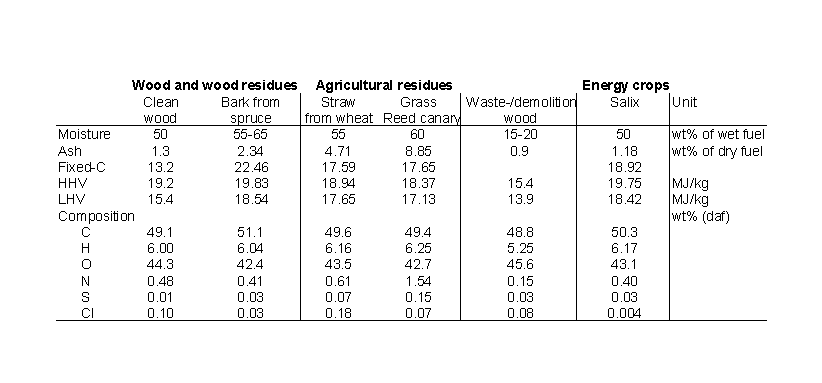-
What is biomass?
Date posted:
-
-
Post Author
dev@edge.studio
1. Definition
Biomass is all the matter that can be derived directly or indirectly from plant photosynthesis. It is a [GLOSS]renewable energy[/GLOSS] that could replace the use of some [GLOSS]Fossil fuel[/GLOSS], for example coal. This Combustion File explains some differences between biomass and coal and compares several biomass types.
2. Differences between coal and biomass
Coal contains between 75-90% carbon while biomass carbon content is about 50%. This means that the [GLOSS]heating value[/GLOSS] of biomass is lower. Biomass fuels contain more volatile components and are more reactive than coal: at 500ºC about 85% by weight of the wood material is normally converted into gaseous compounds. These differences are explained by the O/C and H/C ratios of each fuel, shown in the Van Krevelen diagram:
3. Biomass types
Biomass resources can be grouped into various categories such as:- Wood residues (forest residues, paper and furniture industry)
- Urban wood waste/demolition wood (from packing, construction)
- Agricultural residues (from crops, food processing and animals)
[GLOSS]Dedicated energy crops[/GLOSS]
Table 1 gives an overview of composition properties of the most important biomass resources of interest in large scale combustion systems. The great variations in moisture content, ash and chemical composition, especially nitrogen, sulphur and chlorine give rise to large variations in combustion behaviour and pollutant emissions from combustion systems unless this is carefully considered in the design and operation of the furnaces and boilers in addition to implementing a proper cleaning system for a particular plant.

Table 2 gives an overview of properties of biomass ashes with a special emphasis on erosion and corrosion potential of these ashes. Fuels having the ratio(Na2O + K2O/SiO2) above 2 require special precautions to avoid fouling problems. If the ratio is below 0.2, then precautions must be taken to avoid erosion which can occur from the high silica content. The range in ash content and composition for bituminous coal is also given in the table for comparison.
b) Insufficient information to calculate the ratio.
The most important techniques for biomass combustion are:
- Small scale: wood stoves, tiled stoves, underfeed stokers
- Large scale: moving grates, vibrating grates, bubbling and circulating fluidised beds, pulverised combustors, cigar combustor(straw).
